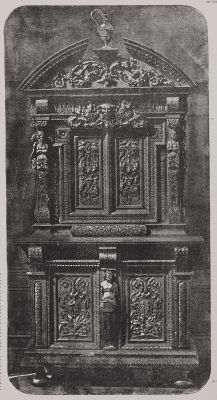
Title
Chemin du salut, frise, par Luca della RobbiaArtist
UnknownPublication
L'Art Pour Tous Encycolpedie de l'art Industriel et DecoratifDate
1864Process
HalftoneAtelier
Garnier et SalmonImage Size
19.3 x 21.8 cm
This photomechanical illustration was obtained by the process of Garnier and Salmon that the inventors communicated to the Academy of Sciences in the year 1855. [1]
L’Art pour tous existed to popularize great works of art and craftsmanship. Its aims were celebratory, educational, and nationalist: to bring together masterpieces that were in fact dispersed across private and public collections, make them broadly accessible, and, in so doing, develop the artistic instinct that places France first among nations. Its pages were filled with wood engravings and occasionally chromolithographs reproducing paintings, sculptures, typography, and patterns for decoration. But its greatest subject was applied art, or l’art industriel. The uniting feature was ornament, the rich abstract and figurative motifs that adorned these objects. With few exceptions, Baldus’s photogravure publications from first to last closely parallel L’Art pour tous in their concentration on ornament, interest in artistic heritage, and glorification of French design. Some of the journal’s engravings may even have derived from Baldus prints. [2]
References
[1] Marbot, Bernard. After Daguerre: Masterworks of French Photography (1848-1900) from the Bibliothèque Nationale. New York: Metropolitan Museum of Art, in association with Berger-Levrault, Paris, 1980.
[2] Addleman-Frankel Kate. 2018. After Photography? : The Photogravures of Édouard Baldus Reconsidered. Amsterdam The Netherlands: Rijksmuseum Manfred & Hanna Heiting Fund.
